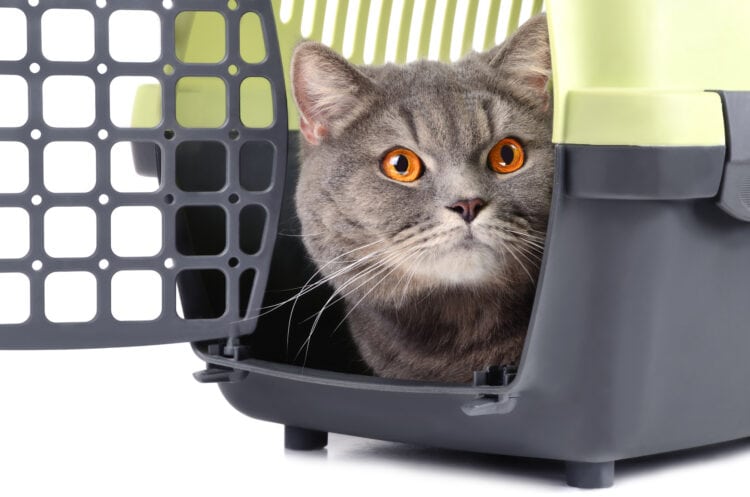Published by: Ingrid King. Last Updated on: February 6, 2023 by Crystal Uys

A cat carrier is an important part of your cat’s life. For most cats, the only time they’re in a carrier is when they have to go to the veterinarian, so the association with carriers is often a negative and stressful one. But carriers can be vital in an emergency, and it’s crucial to get your cats used to the carrier so that they can associate it with a positive experience.
Pick the right carrier
Carriers come in all shapes and sizes, from hard-sided crates to soft-sided carrying cases. It comes down to your preference and your cat’s as to which one you choose. Make sure that the carrier is large enough for your cat to be able to stand and turn around in it comfortably. If you plan to travel with your cat, a larger carrier that can accommodate a small litter box may be a good choice.
Keep the carrier accessible at all times
Make the carrier part of your cat’s every day environment. Leave it on the floor and open so your cat can explore on his own and doesn’t view the carrier as something that only comes out when it’s time to go to the vet’s. By being able to walk in and out of the carrier, your cat will stop viewing it as something threatening.
Make the career interesting
Place a cat bed or soft blanket inside the carrier. If your cat responds to catnip, periodically sprinkle catnip inside the carrier. Leave treats or favorite toys inside the carrier. Some experts recommend feeding your cat inside the carrier.
Teach your cat the “in” command
Once your cat is comfortable with his carrier, you can use treats to train him to go in. Call him to the carrier, place a treat inside, and say “in.” When he goes in to retrieve the treat, praise him profusely. When he comes out, toss another treat into the carrier and repeat. Over time, you should be able to say “in” first, and your cat will go into the carrier on his own. Reward him with a treat while he’s still in the carrier.
Practice closing the door
Once your cat seems comfortable with the carrier, practice closing the door. Leave the room for a few minutes. If your cat is calm when you return, open the door and give him a treat while he’s still inside the carrier. If he seems agitated or upset, don’t give him a treat (you don’t want to reward the undesired behavior), and try again later, with a shorter period of time.
Practice picking up the carrier
Once your cat is comfortable being inside the carrier with the door closed, pick up the carrier and carry it around the house. Give a treat once you set the carrier down and open the door.
Take your cat for a practice ride
Take your cat for short practice rides in the carrier. Start with just a short drive around the block, and gradually increase the distance. Reward your cat with treats when you return. The idea is to get your cat to associate being in the carrier and in your car with something other than a trip to the vet’s.
With the right carrier, and a patient, slow approach to getting your cat used to it, you’ll avoid a lot of stress when it comes time for a vet visit, and you’ll be prepared for any emergencies.
How did you get your cat used to the carrier? Please share your tips!
This post was first published in 2013 and has been updated.
Picture Depositphotos
Ingrid King is an award-winning author, former veterinary hospital manager, and veterinary journalist who is passionate about cats.
